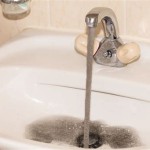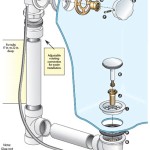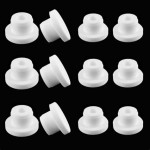Bathtub Surround With Window Kitchen: Harmonizing Light, Function, and Design
The intersection of bathroom and kitchen design presents unique opportunities and challenges, particularly when a bathtub surround incorporates a window facing the kitchen space. This design element, though potentially unconventional, can introduce natural light, foster a sense of openness, and create a visually interesting connection between two traditionally separate areas of the home. However, it also necessitates careful consideration of privacy, moisture control, sound insulation, and overall aesthetic coherence. This article explores the various facets of integrating a bathtub surround with a window into the kitchen, examining the planning, execution, and maintenance aspects crucial for a successful and harmonious outcome.
The appeal of this design feature lies primarily in its ability to maximize natural light. Kitchens and bathrooms often benefit significantly from increased illumination, and a window shared between the two spaces can distribute daylight more evenly throughout the home. This is especially advantageous in smaller homes or apartments where limiting light from the outside makes a home feel smaller and darker. Furthermore, the visual connection between the spaces can create an illusion of greater size, making both the bathroom and kitchen feel more expansive. Beyond the practical benefits, a well-placed window can also serve as a focal point, adding character and visual interest to both rooms.
However, designing a bathtub surround with a window opening to the kitchen is not without its complexities. Privacy is paramount, as is managing moisture and ensuring proper ventilation to prevent mold and mildew growth. The choice of materials, window design, and placement all play critical roles in achieving a functional and aesthetically pleasing result.
Privacy Considerations and Solutions
The most significant concern arising from a bathtub surround with a window facing the kitchen is privacy. While openness and light are desirable, the need for seclusion during bathing is essential. Several strategies can be employed to mitigate this concern without sacrificing the benefits of natural light and visual connection. These include, but are not limited to, specialized window treatments, glass types, window placement, and partial walls.
Window treatments offer a versatile solution for controlling privacy. Options range from simple blinds and curtains to more sophisticated automated shades. Blinds and curtains provide adjustable levels of privacy, allowing occupants to control the amount of light and visibility entering the bathroom. Automated shades offer even greater convenience, allowing for remote control and pre-programmed settings. For a more permanent solution, frosted or textured glass can be used. These glass types allow light to pass through while obscuring the view, providing a constant level of privacy without requiring any additional window coverings. Different degrees of frosting and texturing are available, allowing homeowners to customize the level of obscurity to their preferences.
Another approach is to strategically position the window to minimize direct views from the kitchen into the bathtub area. Placing the window higher up on the wall, above eye level, can limit visibility while still allowing natural light to enter. Furthermore, a partial wall or partition can be constructed to shield the bathtub from direct view, effectively creating a visual barrier without completely blocking the window. This approach allows for a more open and airy feel while still maintaining adequate privacy.
Choosing the right type of glass is crucial not only for privacy but also for safety. Tempered glass is essential for any window in a bathroom, as it is more resistant to breakage and shatters into small, relatively harmless pieces if it does break. This minimizes the risk of injury in the event of an accident. Privacy glass, such as frosted or etched glass, can be incorporated into the tempered glass construction to provide both safety and seclusion. The type of glass chosen must also adhere to local building codes, especially around water-prone locations.
Moisture Control and Ventilation
Bathrooms are inherently humid environments, and a bathtub surround with a window facing the kitchen introduces additional challenges related to moisture control. Without proper ventilation, excessive moisture can lead to mold and mildew growth, damaging building materials and posing health risks. Therefore, adequate ventilation and moisture-resistant materials are essential for a successful design.
Proper ventilation is paramount in mitigating the risk of moisture buildup. An exhaust fan is a necessity in any bathroom, but it is particularly important when a window connects the bathroom to another room. The exhaust fan should be appropriately sized for the bathroom's square footage and should be used during and after showering or bathing to remove excess moisture from the air. Consider installing a fan with a humidity sensor that detects elevated humidity levels automatically switching the fan on.
The materials used for the bathtub surround and surrounding areas must be resistant to moisture. Ceramic or porcelain tiles are excellent choices, as they are impervious to water and easy to clean. Cement board or fiberglass-reinforced gypsum panels serve as a solid substrate to ensure moisture doesn't seep into the wall's structure. Furthermore, epoxy grout is preferable to cementitious grout, as it is less porous and more resistant to water absorption, which helps prevent mold and mildew growth. The window frame itself should also be made of moisture-resistant materials such as vinyl or fiberglass. Wood frames, while aesthetically pleasing, are more susceptible to water damage and should be avoided in high-moisture areas if not properly sealed and maintained.
In addition to moisture-resistant materials, proper sealing and caulking are essential for preventing water from penetrating the walls and floors. All joints and seams around the bathtub, shower, and window should be carefully sealed with a high-quality waterproof sealant. Regular inspection and maintenance of the sealant are necessary to ensure its integrity. Any cracks or damage should be promptly repaired to prevent water intrusion.
Condensation on the window can also be a concern, especially in colder climates. Double-paned or triple-paned windows with low-E coatings can help to reduce condensation by providing better insulation. Regularly wiping down the window and surrounding surfaces after showering can also help to prevent moisture buildup.
Aesthetic Considerations and Design Integration
Beyond privacy and moisture control, the aesthetic integration of the bathtub surround with a window facing the kitchen is crucial for achieving a cohesive and visually appealing design. The window should complement the overall style of both the bathroom and the kitchen, creating a sense of harmony and continuity. Factors to consider include window style, frame material and finish, size and proportion, and the overall design aesthetic.
The style of the window should align with the architectural style of the home and the design aesthetic of both rooms. For example, a traditional home might benefit from a window with a classic grid pattern, while a modern home might opt for a sleek, minimalist window with clean lines. The frame material and finish should also complement the surrounding décor. Vinyl or fiberglass frames are available in a variety of colors and finishes, allowing homeowners to coordinate them with the cabinets, countertops, and other fixtures in both the bathroom and the kitchen. Wood frames can add warmth and character but require more maintenance and are best suited for drier environments.
The size and proportion of the window should be carefully considered to ensure that it is visually balanced with the surrounding elements. A window that is too large can overwhelm the space, while a window that is too small may not provide enough natural light. The proportion of the window should also be in harmony with the other windows and openings in the home. The placement of the window should be carefully planned to maximize natural light and privacy. Placing the window higher up on the wall can provide more privacy while still allowing natural light to enter. A partial wall or partition can also be used to create a visual barrier without completely blocking the window.
The overall design aesthetic of the bathroom and kitchen should be cohesive and harmonious. The colors, materials, and finishes should complement each other, creating a sense of continuity between the two spaces. Consider using similar tiles, paint colors, or hardware in both rooms to create a unified look. The window itself can also serve as a unifying element, connecting the two spaces visually and aesthetically.
Incorporating decorative elements, such as plants or artwork, can further enhance the aesthetic appeal of the window. Placing a small potted plant on the windowsill can add a touch of greenery and bring life to the space. Artwork or decorative objects can also be displayed near the window to create a visually interesting focal point. These elements can also help to soften the transition between the bathroom and the kitchen, creating a more inviting and welcoming atmosphere.
Ultimately, designing a bathtub surround with a window facing the kitchen requires careful planning, attention to detail, and a holistic approach to design. By carefully considering privacy, moisture control, and aesthetic integration, homeowners can create a functional, beautiful, and harmonious space that enhances the overall quality of their home.

Window Above Bathtub Design Ideas
:max_bytes(150000):strip_icc()/examples-of-tub-surrounds-1821012-hero-9505276b4777474daa23ee28bbe2bcc8.jpg?strip=all)
10 Ideas For Bathtub Surrounds

Choosing Shower Tile For Our Bathroom The Diy Playbook

The Modern Bathroom What Are Top 5 Types Of Showers To Choose From Follow Yellow Brick Home

Marble Tub Surround Design Ideas

Oval Bathtub Under Seeded Glass Windows Transitional Bathroom

Solution To The Large Window In Shower Simple Diy Cover

10 Bathtub Ideas That Will Make You Never Want To Leave Home Heather Hungeling Design

Carrara Tub Surround Design Ideas Page 1

59 Bathroom Window Ideas Spacious Atmosphere Windows
Related Posts








